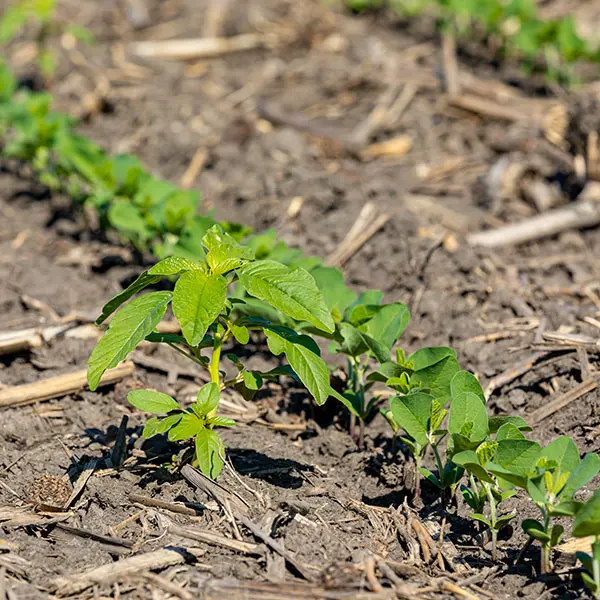Before the Roundup Ready Row Crop Revolution that began in 1996, we actively used pre-emergence tank mixes with a fair amount of success for weed control. At that time, there was still a large amount of tillage used, not near as many herbicide options to select from, and we had not heard of weeds like Waterhemp or Palmar Amaranth. Today, there is a vast wealth of pre/post treatments and tank mixes to select from and utilize in your operation.
2022 Weed Control Issues
So, what happened to weed control in 2022? We can cast this off as the ongoing drought caused pre-residual herbicides to not last as long and post-herbicides not to work effectively. Though, there are always some fundamental reasons why weeds do not die—especially with post-emergence applications. Just because weeds do not die after a single failed post herbicide application does not make them automatically herbicide resistant – there is much more to it. However, as an industry, we tend to think that applications have trended towards more of a post application emphasis to “clean up” anything that emerged after the pre treatments have run out of residual.
After emergence, when all weed species grow (usually faster than we like), the epidermal layer of the leaf cuticle is thin/porous and receptive to many herbicides, both with contact and systemic properties. However, as the weeds age, the cuticle thickens with age. If dry weather develops, the combination of thicker cuticles and decreased active weed growth reduces the absorption/movement of many herbicides into the targeted weed, which can lead to poor/reduced weed control. This is especially true when weeds get bigger in height (broad leaves more than 6” and grasses more the 4”). There is also a species response—meaning that certain weeds survive better in dry weather than others—they physically always have thick leaf cuticles or not a lot of leaf surface area—Waterhemp, Palmar Amaranth, etc.
I have always said that it is much easier to control weeds when they are actively growing, and you cannot see them. Multi-mode pre-emergence herbicides have more value than ever before. Multi-mode pre treatments, combined with multi-mode post treatments, offer you a wide range of weed spectrum control. The usual reservation with this is the entire cost of the programs involved.
RECOMMENDATIONS
Let’s consider two of our more popular pre/post treatment combinations for both corn and soybeans:
CORN
SOYBEANS
How and why do we make these recommendations? This is done with several resources—active ingredients involved, industry data, and weed efficacy tables from the 2023 UNL Guide for Weed, Disease, and Insect Management. See an example below:
Are these ironclad? No. Weather always plays a role in the level of herbicide activation and residual length. Your results will likely vary from year to year, but these are fine examples of multi-mode pre- and post-emergence herbicide combinations that give you a good chance at long-lived broad spectrum weed control.
PRODUCT SPOTLIGHT
By increasing coverage, adhesion and residual activity, EFFICAX® helps you get the most out of your herbicide. EFFICAX enhances your control over early-season weeds by getting more herbicide on target, holding it in place longer and ensuring your herbicide investment is more efficient than ever. Learn more about this key product.







